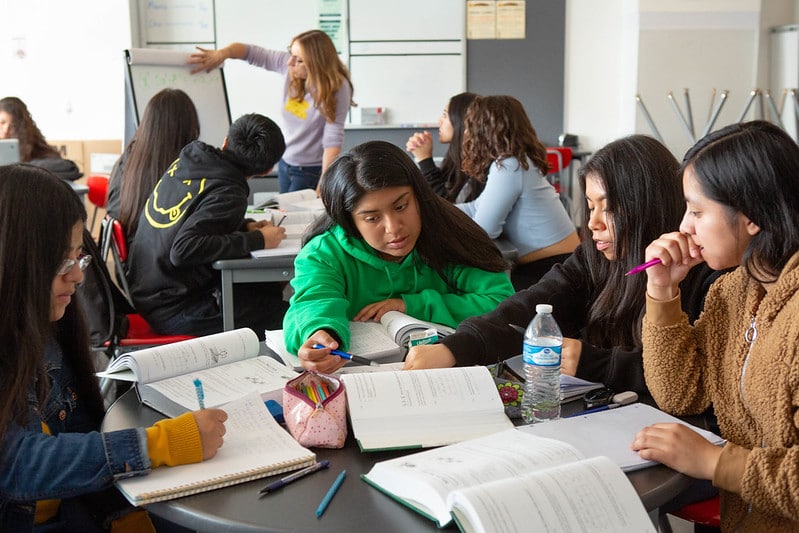What Is Seat Time?
Education is critical to ensuring life-long success for students. Over the years, various requirements have been developed for school districts that are meant to ensure that every student is on track for learning.
One such requirement – seat time – has had important implications for how students build necessary skills and competencies, and their preparedness for opportunities after high school, like college or career.
After reading this article, you will be able to define seat time, see how providing flexibility on this requirement supports students in achieving education and career outcomes, and have concrete examples for how education policy is being leveraged to move past these restrictions and better prepare students for long-term success.
The Definition of Seat Time
“Seat time,” also referred to as “instructional time,” is a requirement placed on school districts for each student to receive a certain number of hours of contact with a classroom teacher. According to the law in Colorado, high school and middle school students are required to receive 1,080 hours of teacher-pupil instruction, elementary students are required to receive 990 hours and 900 hours are required for full-day kindergarteners. These rules must be met for districts to receive critical funding. These requirements around tracking teacher-pupil instruction have created a system where districts can feel burdened by, or fearful of, expanding learning opportunities outside of the classroom because it may impact the financial resources they receive to support students, educators, and staff.
Why Seat Time Flexibility Supports Student Success
With COVID-19, rates of student disengagement have hit an all-time high. Challenges like the transition to remote learning, impacts on families and home life, and isolation and loss of connection, among other barriers, have all contributed to students struggling to meet their educational goals. This has spurred a call to make learning opportunities more relevant to student needs, interests, and learning styles, while supporting them in building hope for what their future might hold.
Even before the pandemic, traditional methods of classroom instruction were not adequately preparing students for what they would experience upon graduation. In a recent U.S. study, 73% of employers reported that it was very or somewhat difficult to find qualified candidates for jobs, and 34% felt that schools have not properly prepared students for jobs. In addition to a solid foundation in core academic subjects, success after high school is also based on having developed the personal, civic, professional, and entrepreneurial competencies required to succeed in higher education and/or in the workplace. With estimates that 85% of the jobs available in 2030 have yet to be invented, it’s all the more critical that the education system prepares students to develop the hard and soft skills they’ll need to thrive in an uncertain future.
Research has shown that students who participate in career-connected learning experiences are more likely to gain important credentials and succeed in careers in high-demand sectors than students who do not participate in these experiences. This is believed to be partly due to these opportunities allowing students to link their academic preparation with their future career interests. And, as we work to prioritize equity in our education system, its important to note that benefits have shown to be even greater for low-income students and students of color.
How Policy Can Bring Seat Time Flexibility
Colorado’s groundbreaking competency-based graduation policy makes clear the state’s overall desire to ensure that students have actually met competency goals, rather than merely counting the number of instructional hours a student receives and assuming they’ve developed necessary skills. With that in mind, Coloradans have been working to ensure that districts feel supported in scheduling greater flexibility for students interested in pursuing experiential learning.
Two recent policy examples seek to move past the restrictions of seat time requirements to better support student success:
- The Innovative Learning Opportunities Pilot: Through this legislation passed in 2019, a cohort of school districts, charter schools and BOCES, are given greater flexibility alongside targeted technical assistance to make it easier to offer students a variety of learning experiences outside the classroom, like career-connected learning. Districts can offer students schedule flexibility without worrying whether state auditors will understand the way they have documented a students time spent learning in out-of-school environments. Participating students are counted as full-time regardless of the number of hours spent in the classroom.
- The Successful High School Transitions Bill: introduced in 2021, this legislation would make high school more engaging and relevant for students and connect them to more high-quality pathways to opportunities after high school by expanding the innovative learning opportunities program to more schools and districts. It also provides funding for low-income high schoolers who have met their high school graduation requirements early to enroll in experiences with approved providers in their fourth year.
Efforts to allow for seat time flexibility are important steps towards ensuring that students learn both the hard and soft skills they need to be successful in college and career and that they are prepared to tackle the challenges that face our society today and in the future.
Are you an educator, policymaker, or business or community leader interested in advocating for education solutions that meet the needs and priorities of students and build a strong talent pipeline for business, or just want to learn more? Contact us.

